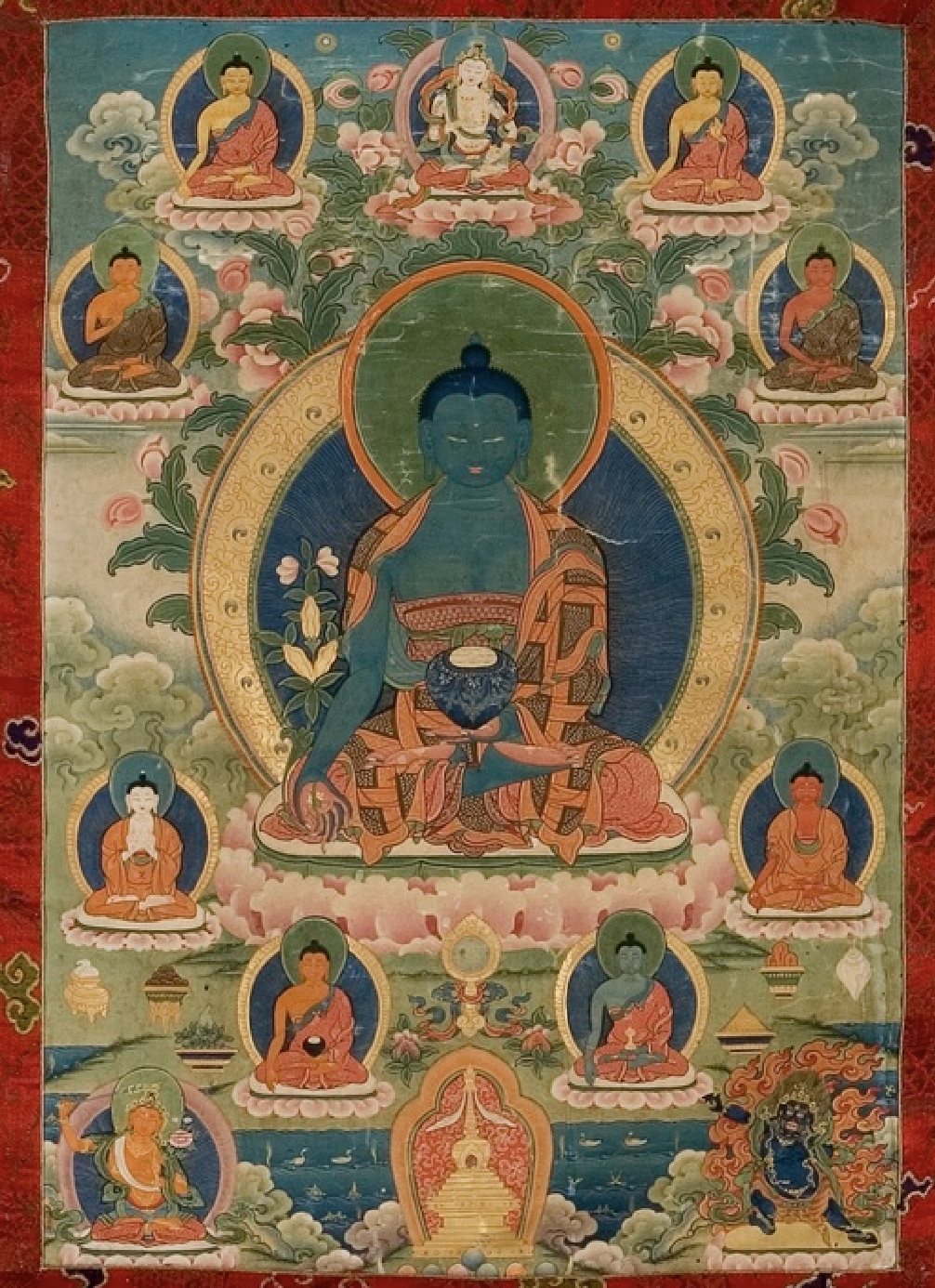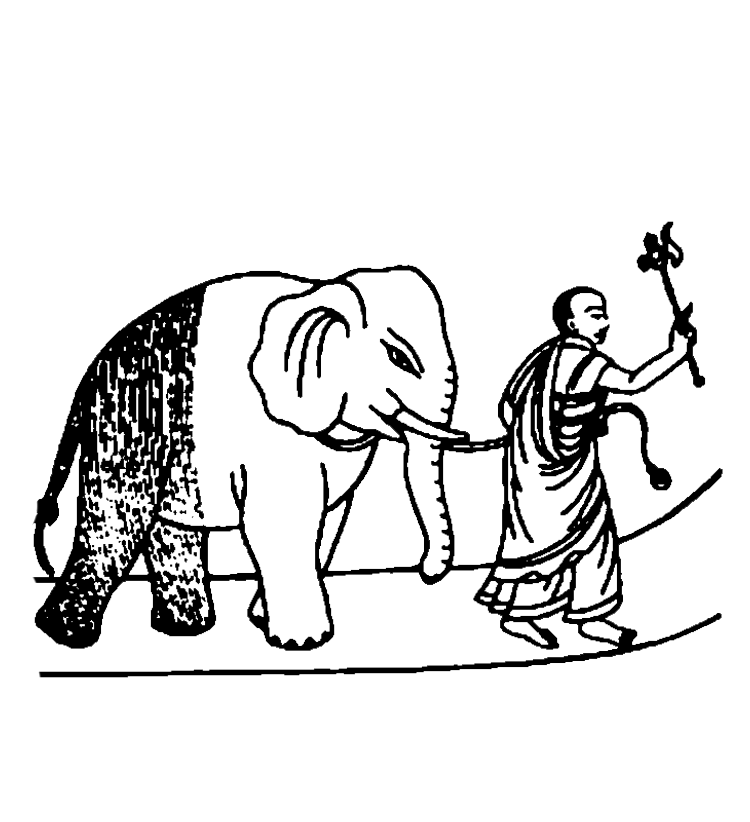TRADITIONAL TIBETAN VERSES ON THE POWER OF PLANTS

The following verses praise the medicinal qualities of plants.
They are found in a religious text called Divine Blue Water.
The text was said to have been written by Guru Padmasambhava,
when he visited Tibet on the invitation of king Trisong Detsen.
Guru Padmasambhava taught the king a healing practice
for purification (called SANG in Tibetan).
︎
འབྱུང་བའི་དྭངས་མ་ལྔ་ལས་གྲུབ་པ་ཡི། །
Plants composed of the essence of the five elements,
ས་ལ་བརྟེན་ཅིང་ཆུ་ཡིས་རབ་ཏུ་བརླན། །
Supported by earth, moistened by water,
མེ་ཡིས་དྲོད་བསྐྱེད་རླུང་གིས་རབ་བསྐྱོད་པས། །
Warmed by fire, moved by wind;
རྩ་བ་ཀླུ་ཡི་གནས་ནས་སྐྱེས་པའི་ཤིང་། །
Plants with roots in the abode of the nāgas;
རྩེ་མོ་ལྷ་ཡི་གནས་སུ་སྨིན་པའི་ཤིང་། །
Plants with zeniths in the abode of the gods;
ལོ་འདབ་མི་ཡི་གནས་སུ་ཁྱབ་པའི་ཤིང་། །
Plants with leaves throughout the abode of humans;
དྲི་ཡིས་ཕྱོགས་རྣམས་མ་ལུས་ཁྱབ་པའི་ཤིང་། །
Plants with fragrance that pervades all places without exception;
ཁ་དོག་དྲི་རོ་ནུས་བཅུད་ལྡན་པའི་ཤིང་། །
Plants with colour, scent, flavour, and nourishing power;
ཤིང་མཆོག་ཙནྡན་དཀར་དམར་ཨ་ག་རུ། །
Precious plants—red and white sandalwood, agalloch eaglewood,
གསེར་ཤིང་མཁན་པ་གཡུ་ཤིང་ཤུག་པ་དང་། །
Golden wormwood artemisia, turquoise juniper,
དུང་ཤིང་བ་ལུ་སྟག་པ་སྤེན་དཀར་དང་། །
White rhododendron, birch, white blossomed tamarisk,
འོམ་བུ་རྦ་སྨྱུག་ཉ་སྦྲིད་གསེར་མགོ་དང་། །
Neem, bamboo, nyadri sergo;
ཕོ་ཤིང་མོ་ཤིང་བུ་ཤིང་ཤིང་སྣའི་ཚོགས། །
Male plants, female plants, child plants, many kinds of plants;
འབྲས་བུ་གསུམ་དང་བཟང་དྲུག་སྨན་སྣའི་ཚོགས། །
The three fruits; the six excellent medicines;
དྲི་ལྡན་རོ་ནུས་ཁ་དང་སྐ་བའི་རིགས། །
Various kinds of medicine that are bitter and astringent with potent flavour and scent.
